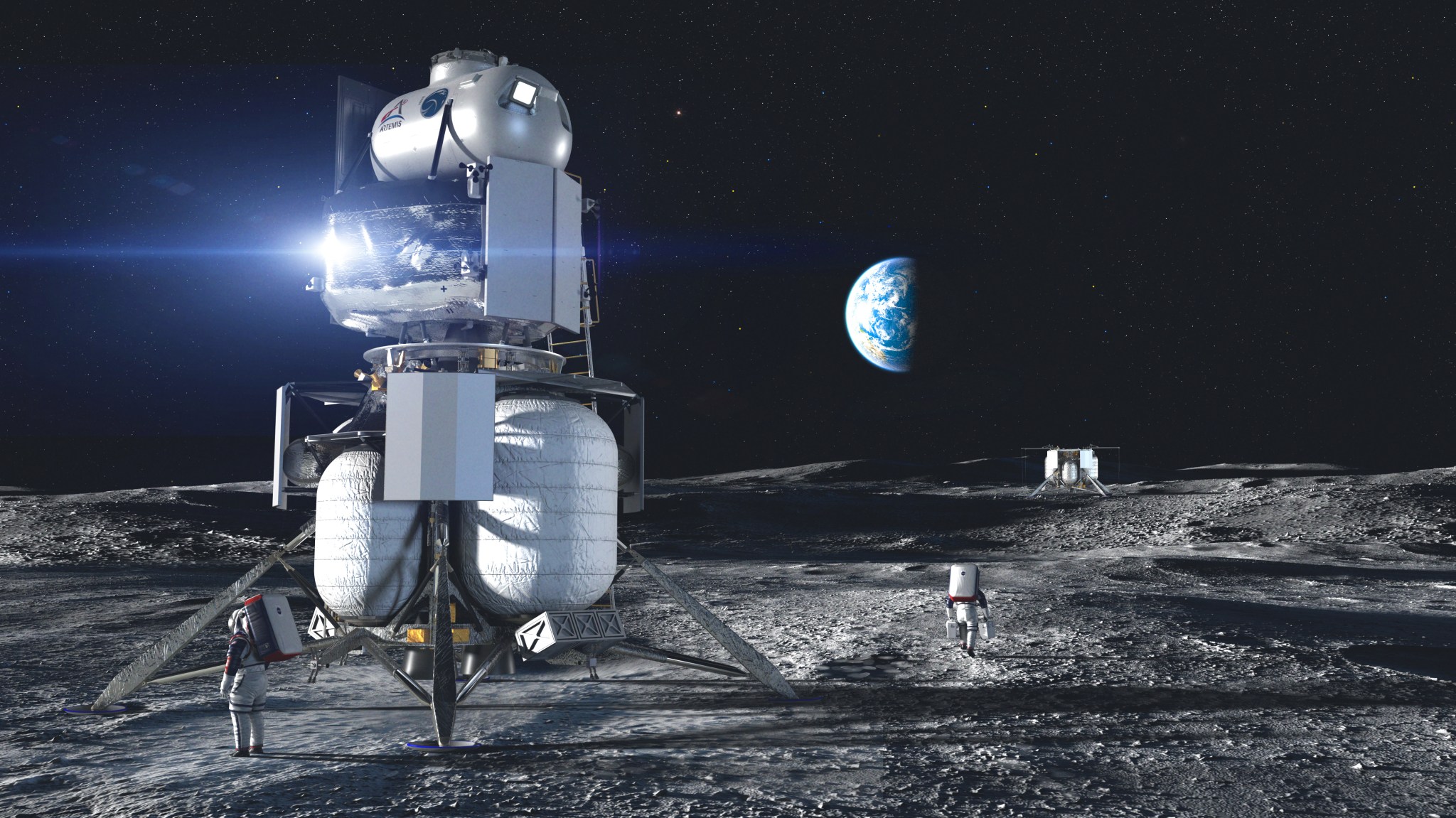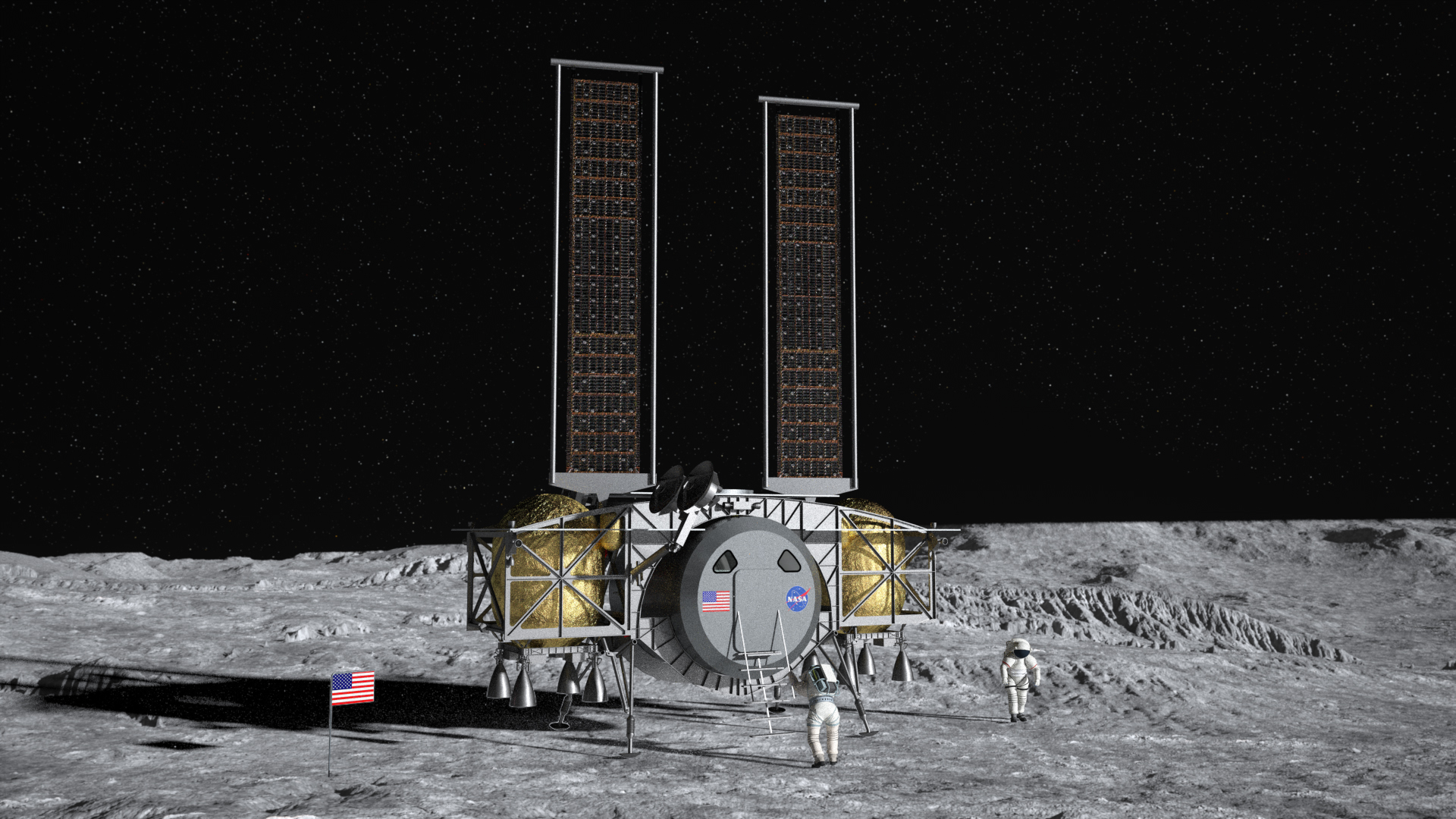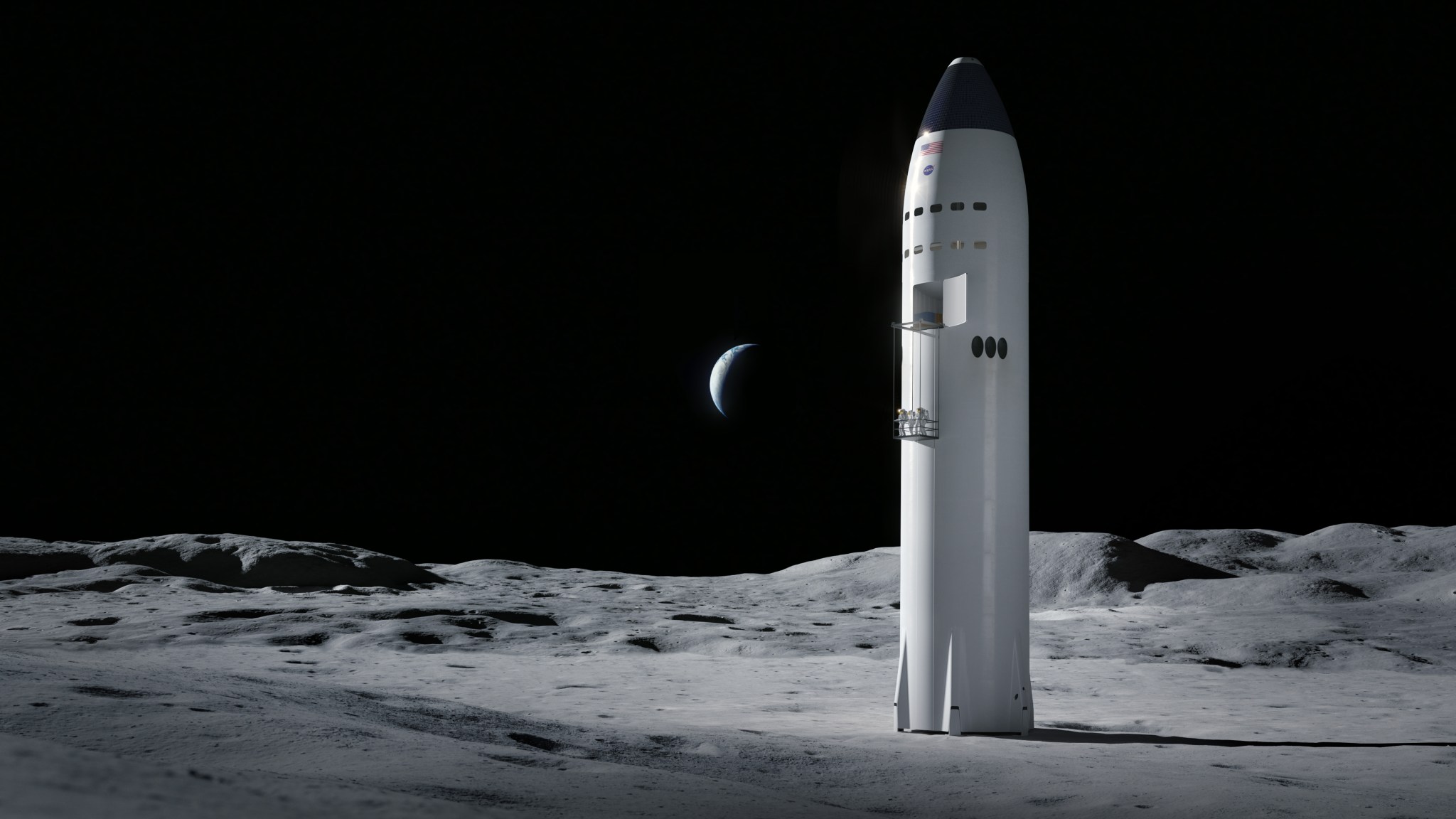NASA announced that three U.S. companies will develop the human landers that will land astronauts on the Moon beginning in 2024 as part of the Artemis program. These human landers are the final piece of the transportation chain required for sustainable human exploration of the Moon, which includes the Space Launch System rocket, Orion spacecraft, and the Gateway outpost in lunar orbit.
The awardees for NASA’s Human Landing System contracts are Blue Origin of Kent, Washington, Dynetics (a Leidos company) of Huntsville, Alabama, and SpaceX of Hawthorne, California. These teams offered three distinct lander and mission designs, which will drive a broader range of technology development and, ultimately, more sustainability for lunar surface access.
The agency is planning crewed demonstration missions to the lunar surface beginning in 2024. The initial demonstration missions represent a return to the Moon for the first time since 1972, but with several key differences, including the use of 21st century technologies and access to more parts of the Moon. Later sustainable demonstration missions will make full use of the Gateway-enabled capabilities, including refueling and reuse of all or parts of the lander. This approach allows NASA and industry to combine their respective expertise and capabilities into tightly collaborative partnerships needed to meet this challenge before achieving a regular cadence of missions using commercial services contracts later in the decade.
“This is the model we’ve used for commercial cargo, commercial crew, and Commercial Lunar Payload Services,” said Marshall Smith, director of human lunar exploration programs at NASA Headquarters in Washington, referring to the precursor development and demonstration activities like COTS, CCiCAP, and Lunar CATALYST, respectively. “We’ve proven that an early study and refinement phase, followed by demonstrations, then by services contracts is an effective approach to commercial development for space transportation services for which NASA hopes to be just one of several customers.”
To start, the companies will begin work in an approximate 10-month base period outlined in the NextSTEP-2 Appendix H BAA. During the base period, NASA teams will be embedded with the companies to help streamline the review of required deliverables to NASA and to impart expertise that the agency has acquired over the last 60 years of human spaceflight systems development.
“NASA has a proven track record for landing people and cargo on other planetary surfaces,” said Lisa Watson-Morgan, Human Landing System program manager at NASA’s Marshall Space Flight Center in Huntsville. “It’s an amazing time to be with NASA partnering with U.S. Industry and our focused goals of landing humans on the Moon by 2024.”
The concepts are outlined below in alphabetical order.
Blue Origin
Blue Origin is the prime contractor for the National Team that includes Lockheed Martin, Northrop Grumman, and Draper. Their Integrated Lander Vehicle (ILV) is a three-stage lander that harnesses the proven spaceflight heritage of each team.
Blue Origin will build the descent element which is powered by BE-7 cryogenic engines three years in private development, with cryogenic technologies now under Tipping Point support. Lockheed will build the ascent element that includes the crew cabin, which will have significant commonality with Orion. Northrop Grumman will build the transfer element based largely on its Cygnus cargo module that services the International Space Station. Northrop Grumman is also leading development of a future refueling element for a sustainable lander demonstration. Draper will provide the guidance, navigation and control, avionics, and software systems that draw largely on similar systems the company has developed for NASA.
In their proposal, the National Team outlines a plan in which the ILV can dock with either Orion or the Gateway to await crew arrival. The Blue Origin National Team’s elements for the Human Landing System can be launched individually on commercial rockets or combined to launch on NASA’s Space Launch System.
Dynetics
Dynetics proposed a robust team with more than 25 subcontractors specializing in both the larger elements and the smaller system-level components of the Dynetics Human Landing System. The large team capitalizes on Dynetics’ experience as an integrator on military and defense contracts with large subcontractor teams.
The Dynetics Human Landing System concept includes a single element providing the ascent and descent capabilities, with multiple modular propellant vehicles prepositioned to fuel the engines at different points in the mission. The crew cabin sits low to the surface, enabling a short climb for astronauts entering, exiting, or transporting tools and samples. The DHLS systems supports both docking with Orion and with Gateway, and will get a fuel top-off before descending to the surface. After the surface expedition, the entire vehicle will return for crew transfer back to Orion.
The Dynetics Human Landing System is rocket-agnostic, capable of launching on a number of commercial rockets.
SpaceX
Starship is a fully reusable launch and landing system designed for travel to the Moon, Mars, and other destinations. The system leans on the company’s tested Raptor engines and flight heritage of the Falcon and Dragon vehicles. Starship includes a spacious cabin and two airlocks for astronaut moonwalks.
Several Starships serve distinct purposes in enabling human landing missions, each based on the common Starship design. A propellant storage Starship will park in low-Earth orbit to be supplied by tanker Starships. The human-rated Starship will launch to the storage unit in Earth orbit, fuel up, and continue to lunar orbit.
SpaceX’s Super Heavy rocket booster, which is also powered by Raptor and fully reusable, will launch Starship from Earth. Starship is capable of transporting crew between Orion or Gateway and the lunar surface.
Forward to the Moon
“We are thrilled to see the variety of approaches from these companies,” said Watson-Morgan. “Beyond our goal to return humans to the Moon by 2024, this accelerated development will boost advances in critical systems for all lander types, human and robotic.”
NASA got a jump-start in some of those advanced systems through work completed under NextSTEP-2 Appendix E. Eleven U.S. companies provided studies, demonstrations and prototypes under Appendix E, revealing new concepts to address cryogenic fluid management, in-space propellant transfer, and precision landing and hazard avoidance systems.
When NASA sends astronauts to the surface of the Moon in 2024, it will be the first time generations of people will witness humans walking on another planetary body, outside of watching historical footage from Apollo. Building on these footsteps, future robotic and human explorers will put infrastructure in place for a long-term sustainable presence on the Moon.
To learn more about NASA’s Moon to Mars campaign, visit:






























